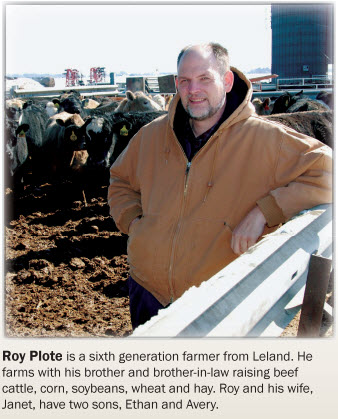 Q: What are the different grades of beef and what should I look for when purchasing beef from the meat case?
Q: What are the different grades of beef and what should I look for when purchasing beef from the meat case?
A: Prime, Choice, Select and Standard are the different quality grades of beef. The quality of beef and marbling are important when choosing desirable cuts.
 When you bite into a savory USDA Prime-graded steak you will find that it is tender and juicy with a buttery flavor, which makes it distinctively superior to any other steak. Of all the beef produced in the U.S., less than 2% is certified as USDA Prime.
When you bite into a savory USDA Prime-graded steak you will find that it is tender and juicy with a buttery flavor, which makes it distinctively superior to any other steak. Of all the beef produced in the U.S., less than 2% is certified as USDA Prime.
In 1925, the U.S. started grading meat on a voluntary basis. The grading was desired to help livestock producers to identify and receive prices that were comparable to other animals of similar quality and yield. The grades would also help create uniform supplies which would aid in promotion and marketing for consumer, retail, and export markets.
The four quality grades that are used for market cattle, under 30 months of age, are Prime, Choice, Select, and Standard. The two major factors that determine the quality of grade are the amount of fat marbling and its distribution combined with the age of the steer. Look for the USDA label on meat, which indicates it has been inspected, certified and graded by the USDA.
Prime is the very finest quality grade of USDA inspected beef. It has the most abundant marbling and is the most tender, juicy and finest texture. It is usually found in high-end restaurants and specialty meat shops. Choice is the second highest grade with moderate marbling. It is slightly less tender and a bit more coarse than prime.
Choice beef is found in grocery stores, many restaurants and some butcher shops.
Select beef is third in the grading scale. It has slight marbling, is the most lean, has a more coarse texture than choice and much less tender. It is usually the lowest grade of meat found in supermarkets and lower-end restaurants.
Standard beef is very lean with little fat. It is usually tough because it’s derived from older cattle. It typically is used in processed meat products and low-cost frozen dinners.
Less than 2 % of beef cattle will grade Prime, 60-80% will grade Choice, 10-30% Select, and 0-20% Standard. Genetics, feed ingredients, type of feeding facility, and weather can all affect the quality grade of the cattle. As an example, when heavy cold and snowstorms hit, cattle will burn off fat and lower the marbling score if the timing of the storm is near the time of shipment.
Marbling is the term used to describe intramuscular fat that creates more tender and flavorful meat. Computer imaging scanners now assist the USDA graders in making these determinations, which for years were made by the trained eye of the certified grader. When purchasing meat in the supermarket look for meat which has an adequate amount of marbling for tenderness and flavor.
The yield of actual meat from a carcass varies by the breed, age, and size of the animal. For example, an Angus steer weighing 1,440 pounds will yield about 63%.
■ Sources: http://www.primesteakhouses.com/howusda-grades-beef.html; http://www.ams.usda.gov/ AMSv1.0/getfile?dDocName=STELDEV3062519
Article from the DeKalb County Farm Bureau Connections Publication
Click Here To Submit A News Tip Or Story

